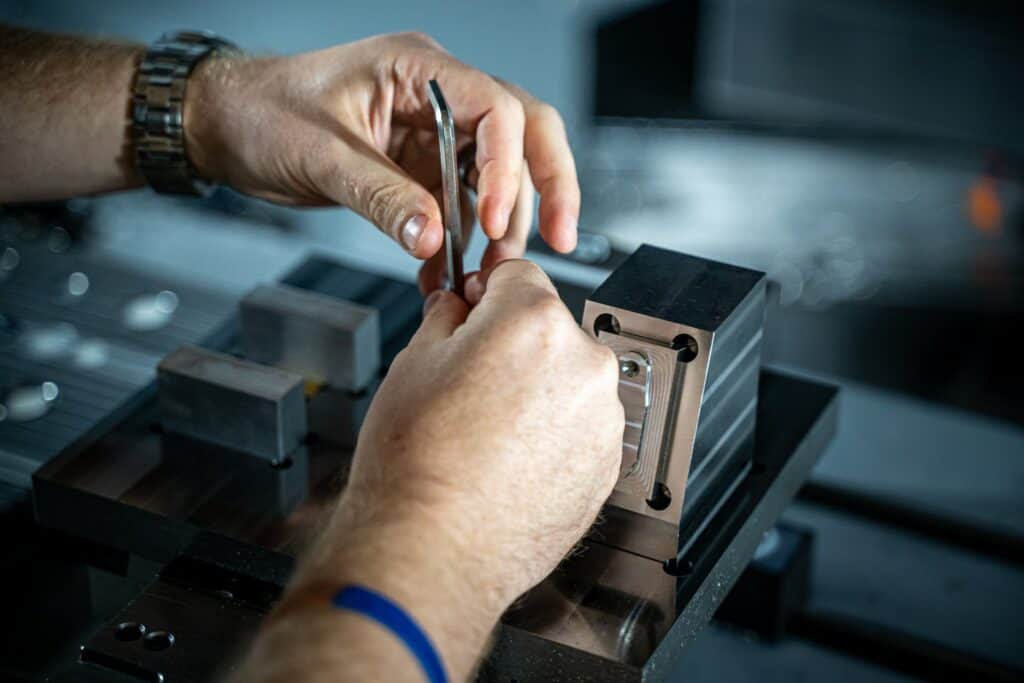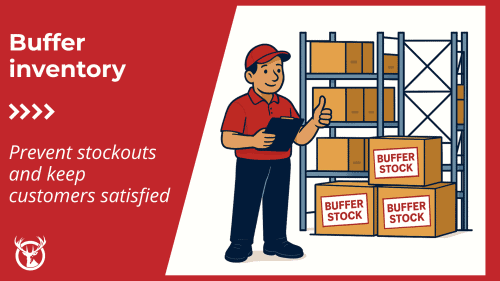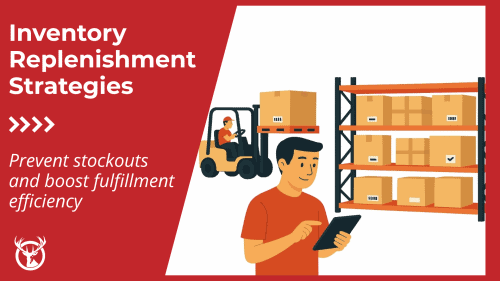Decoupling inventory is taking a more prominent place in supply chain discussions outside of manufacturing circles because today’s ecommerce businesses want more significant risk mitigation. Holding onto the components or raw materials required for your SKUs makes it easier to assemble products and fill orders.
With disruption and uncertainty becoming a common feature of today’s supply chain, this inventory management practice is worth considering as you try to protect against both supply- and demand-side fluctuations and response times.

TL;DR:
Decoupling inventory essentials

Decoupling inventory protects operations from supply-side disruptions by separating production from supply shortages.

It mitigates the bullwhip effect by providing a buffer between demand fluctuations and production.

It addresses risks including inconsistent lead times, production stoppages, maintenance issues, and demand forecast challenges.

Particularly valuable for businesses that perform assembly, customization, or final production steps.
Why is decoupling inventory worth considering?
Decoupling inventory protects your operations from supply-side disruptions. Setting aside raw materials and components for final assembly is a reliable hedge against disruptions to multiple elements of your upstream supply chain.
Decoupling inventory allows your business to continue to finalize goods and packaging to fill orders, addressing production-related stoppages instead of tackling demand fluctuations.

NOTE: Decoupling inventory can be seen as a type of safety stock, but with a focus on components needed for final assembly or production. For ecommerce fulfillment, this strategy enables customization of products before shipping.

Decoupling inventory can be seen as a type of safety stock, but the final assembly or production element is worth noting. In ecommerce, decoupling inventory could allow you to fill orders where goods are customized — you’re amassing the various components needed for final selection. Another prime example would be food processing, where your company builds up a stockpile of containers to minimize disruption when foods are ready for canning. An aluminum can shortage during 2021 was a crucial part of declining revenues and product availability for breweries and CPS brands like Monster Beverage Corp.
If your operations require assembly, production, or other finalization processes within facilities you control, decoupling inventory is a smart hedge.

Addressing the bullwhip effect
Today, we’re often looking at the impacts of a bullwhip effect that spans global supply chains and interconnected organizations. The phenomenon covers when a demand change at the downstream end of your supply chain reverberates upstream, disrupting product, stock levels, freight movements, and other activities.
Suppliers try to adjust their operations based on the demand shift, typically leading to a mismatch where there is too much or not enough raw materials and components to fill orders across each level of the supply chain.

PRO TIP: Working with a 3PL provider that offers kitting and assembly services can help you implement decoupling inventory strategies without investing in additional warehouse space or assembly capabilities.
The ongoing pandemic created concerns on how much safety stock to hold, balancing the need to avoid dead stock with potential lost sales due to backorders. Targeting the wrong inventory levels makes companies vulnerable to competitors, and they may face the need to slash pricing to avoid a total loss.
Decoupling inventory protects the production side, allowing companies to scale back restocking efforts or weather inconsistent lead times and still meet customer order needs. You can ride out demand peaks and valleys while still pursuing profitability.

What risks does decoupling inventory tackle?
Inconsistent lead times
Whether your supplier network is struggling with an event like COVID-19 or has other issues causing them to become unreliable, decoupling inventory insulates you from inconsistent and disrupted lead times. These emergency supplies help extend inventory as lead time grows or, if held at sufficient volume based on current demand, can bridge transitions between suppliers.
Leaders consistently hear that diversifying supply lines can help protect against COVID and other threats. Decoupling inventory is a practice that makes this feasible — while still acknowledging the incredible complexity of sourcing, approving, and moving forward with new supplier relationships.
Production stoppages
Some manufacturer issues go beyond lead time disruptions, especially if an outbreak entirely shuts down a facility. These production stoppages make it challenging to address immediate orders and hard to plan for long-term growth and sustainability. Decoupling inventory gives you breathing room to tackle immediate orders and start looking for new sources or making alternate plans.
Spot maintenance and repairs
Things can break in your facilities, too. Decoupling inventory can give your production lines and facilities the time they need to make a repair or source a missing part without a significant impact to order fulfillment. Any manufacturing shutdown can harm revenue quickly. Decoupling inventory in your warehouse mitigates the risk this poses and even makes it easier to perform routine maintenance without any disruption.
If you’re not performing a significant manufacturing operation, ask your production partners about their decoupled inventory. Determine what they hold to see if any internal manufacturing issue will lead to immediate disruption of your supply chain.
COVID-19 pipeline inventory disruptions
Decoupling inventory also helps you mitigate issues with pipeline inventory — the inbound stock currently in transit to one of your locations. Recent years have shown us that delays can happen at freight facilities from all carriers, delays at ports, during inclement weather, when facing infrastructure problems, and so on. The Suez Canal is more top of mind than ever. Decoupling inventory and storing at your facility closest to those last-mile moves lets you absorb pipeline delays.
Demand forecast challenges
Every operator knows that demand forecasting has struggled in recent years. The unexpected nature of pandemic buying and the rapid adoption of ecommerce have thrown most predictions out the window. Not only did businesses struggle to forecast accurately, but they also realized they lacked planned responses to incorrect forecasts.
Decoupling inventory can help mitigate demand forecast challenges by providing a sourcing option to fill orders when you’ve set stock levels too low. On the other hand, if you’ve ordered too much stock, decoupling prioritizes parts and materials that generally have lower initial costs and more versatile uses than finished products. You’re cushioning the blow of spending the capital while having the flexibility to shift parts or materials to new production lines.

Where does your business go from here?
Businesses should start their decoupling inventory conversations with a look at inventory carrying costs and their current logistics partnerships. If you’re using a 3PL, bring them into the conversation about how this inventory can protect you and what storage requirements it has. Understand any physical constraints and then build out your risk mitigation strategy.

NOTE: When evaluating potential fulfillment service providers, ask about their capabilities for storing and managing component parts for decoupling inventory strategies. The right partner can provide both storage and assembly services to maximize your supply chain resilience.
Decoupling inventory is an effort designed to improve the financial health of an enterprise. It gives you a bulwark against manufacturing and inbound freight issues, providing more control in even uncertain times. If you’re manufacturing goods or performing final assembly —a reliable way to take advantage of FTZ opportunities — it protects against disruption due to planned and unplanned line maintenance. Sometimes, it’s as simple as giving your team the necessary components to pivot without placing new orders or adjusting a more considerable supply chain practice.
Engage partners and evaluate the benefits it provides as part of a broader inventory management strategy.
Need help implementing a decoupling inventory strategy?
Red Stag Fulfillment offers specialized warehousing and assembly services that can help you implement effective decoupling inventory strategies while optimizing your fulfillment processes. Our team of supply chain experts can help you balance inventory needs with cost considerations.












